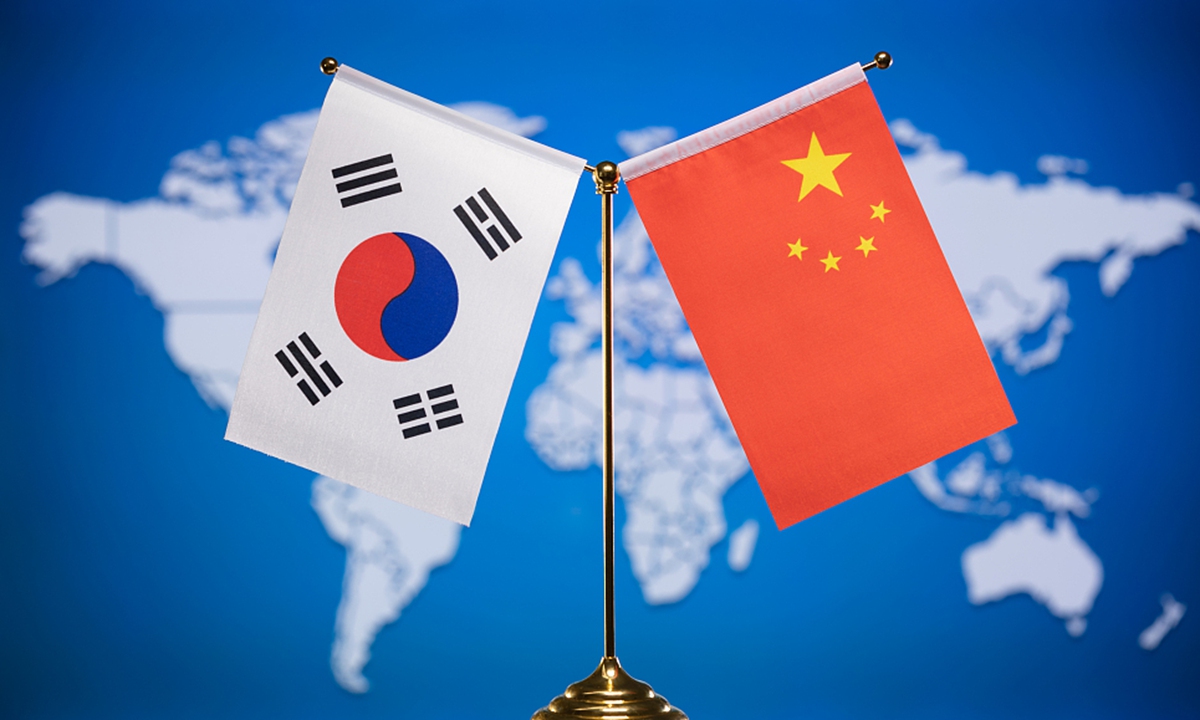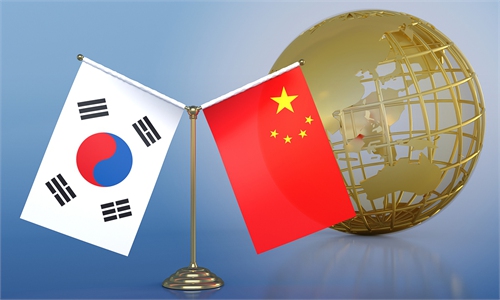
China South Korea Photo:VCG
China’s Ministry of Commerce (MOFCOM) said on Thursday that China and South Korea have made substantial progress in second-phase China-South Korea FTA talks.
So far, the two sides have held nine rounds of formal negotiations. The two sides have carried out negotiation on high-level liberalization of trade in services and investment through a negative list model, and the negotiations made substantial progress, MOFCOM’s spokesperson Shu Jueting, said at a press conference on Thursday.
Both sides have reached consensus on accelerating follow-up negotiations, Shu added.
China is willing to work with South Korea to maintain the momentum of negotiations, strive for an early settlement of a mutually beneficial and win-win agreement, further elevate the level of openness and cooperation in service trade and investment between the two countries, and bring China-South Korea economic and trade relations to a new level, Shu said.
Since the China-South Korea Free Trade Agreement was signed in 2015, the two sides have cut tariffs eight times, and China has implemented zero tariffs on more than 40 percent of imported goods from South Korea, said Shu.
Under the free trade pact, South Korea will eliminate tariffs on 92 percent of all products from China within 20 years after the implementation while China will lift duties on 91 percent of all South Korean imports.
Both imports and exports under the trade pact have increased substantially, driving significant growth in bilateral trade and investment and promoting the development of bilateral economic and trade relations, Shu said.
Against the backdrop of a fragile global economic recovery, trade between China and South Korea has maintained rapid growth. In the first half of this year, bilateral trade reached $184.25 billion, up 9.4 percent year-on-year, surpassing China-Japan trade, according to data from China’s General Administration of Customs.
“It fully demonstrates the strong complementarity of the two economies and the resilience and potential of bilateral trade,” Shu said.

